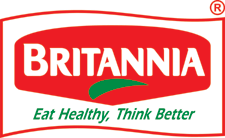2011 marks the 150th anniversary of the unification of Italy, and also the 90th anniversary of the famous Italian fashion label, Gucci. So in order to commemorate this, Guccia and...
From BizDom Blog
Showing posts with label Auto and Aviation. Show all posts
Showing posts with label Auto and Aviation. Show all posts
Automotive Family Tree

Andy Harris from TooManyCars.info has updated (a few times) his fantastic Automotive Family Tree map of who owns the car companies.
Welcome to version 3.2 of the “Family Tree” style...
Piaggio's Vespa to run on Indian roads again

Italian vehicle maker Piaggio on Thursday said it plans to invest 30 million Euro ($38 million) in a new scooter plant and re-introduce the iconic Vespa scooter in the Indian market...
Peugeot develops world's first diesel, electric hybrid

Peugeot says that in launching what it is calling the world’s first diesel full hybrid vehicle — the 3008 HYbrid 4 crossover— next spring, the French automaker will be writing a new...
Ferrari unveils new logo for 2011

Ferrari has unveiled a new logo that will feature on all its team and car branding from the start of next season.
The red-and-white design will become the Maranello-team's official...
Brand Profile: Mazda

The Japanese Mazda was founded in 1920 by Matsuda Jyujiro, initially under the name of Toyo Cork Kogyo Co. In 1927 the brand changed its name to Toyo Kogyo Co. Slowly...
Solar plane: around the world without fuel & with zero emissions

The prototype of a solar-powered plane, the size of an Airbus and the weight of a mid-sized car, destined for a record round-the-world journey has made its first trip across a runway....
LoGO TaLe: Citroen double arrow

André Citroën's inspiration was the wooden gears with spiral teeth, produced by a Polish inventor and business partner's.thus the reason behind the logo. Citroen brand is stylized...
Hybrid's History from Lexus
Lexus launched a new campaign that showcases its hybrid vehicle line and reminds company's five-year history of putting hybrids on the road....
Air New Zealand staff have nothing to hide
To convey their message that they have nothing to hide from its customer ( esp about the pricing), Air New Zealand has run this ad campaign Another video, showing the making of this...
I am Back

G R Gopinath, is all set to launch a door-to-door international freight and cargo service with effect from 27 May. The freight carrier, 'Deccan 360, which will start with an A310...
Company History 9: American Airlines

In 1926, Charles A. Lindbergh was the chief pilot of Robertson Aircraft Corporation, which was based at an airfield in Forest Park. Soon Robertson Aircraft Corporation and about 85...
Prehistory of Michelin

The present Michelin Company dates back to 1829 when Édouard Daubrée marries a Scott, Elizabeth Pugh Barker niece of the scientist Charles Macintosh, who discovered the solubility...
TATA's creativeness - nano Advertising

TATA is looking at unconventional mediums like web search, viral marketing and innovative public relations-driven campaigns, where the news in brief is called ‘Nano news’ in TOI,...
People's cars
FORD MODEL T 1908-1927 The Model T Ford started out in 1908 at a $850 price point. However, the beauty of the Model T was not just the car but also the process, the moving assembly...
Company History 7: BMW- Ultimate Driving Machine

It was founded by Karl Friedrich Rapp and Gustav Otto after the merger of two manufacturers of airplane engines in the city of Munich: a Rapp-Motorenwerke and Gustav Otto...
Subscribe to:
Posts
(
Atom
)


































